
… then you’ve already experienced the benefits of Google’s Knowledge Graph.
But what is a knowledge graph? How does it work? And how can you take advantage of it to increase brand visibility and improve SEO?
In this guide, you’ll learn:
- What Google’s Knowledge Graph is
- How it influences search
- How to get in the Knowledge Graph
- How to suggest changes to your Knowledge Panel
Google’s Knowledge Graph is a knowledge base of entities and the relationships between them.

What is an entity? It’s any object or concept that can be distinctly identified. This includes tangibles like people, places, and organizations, and intangibles like colors, concepts, and feelings.
Entities are connected by edges, which describe the relationships between them.
Storing real-world data like this helps Google to understand the meaning behind search queries, which means more relevant results for searchers.
Generally speaking, the Knowledge Graph is a positive thing for both users and SEOs. Users get more relevant search results, and SEOs get more traffic to deserving content.
But it’s not all roses and unicorns. There are some downsides.
Here are four ways the Knowledge Graph influences search, for better and worse:
Google better understands search intent
Links are great for gauging the quality of a page, but not its relevance to the search query.
That’s fine as long as search queries resemble the language of the content. Google can use quality signals such as links to return the best content from its index.
But people don’t always search that way. They describe things in different ways.
That’s where the Knowledge Graph comes in, as it allows Google to go beyond keyword matching and return more relevant results.
For example, take the query “small green guy with lightsaber”:

Despite the fact we didn’t even mention Star Wars, Google still understands what we’re looking for and gives us the answer.
The same is true for the query “han solo actor other movies”:
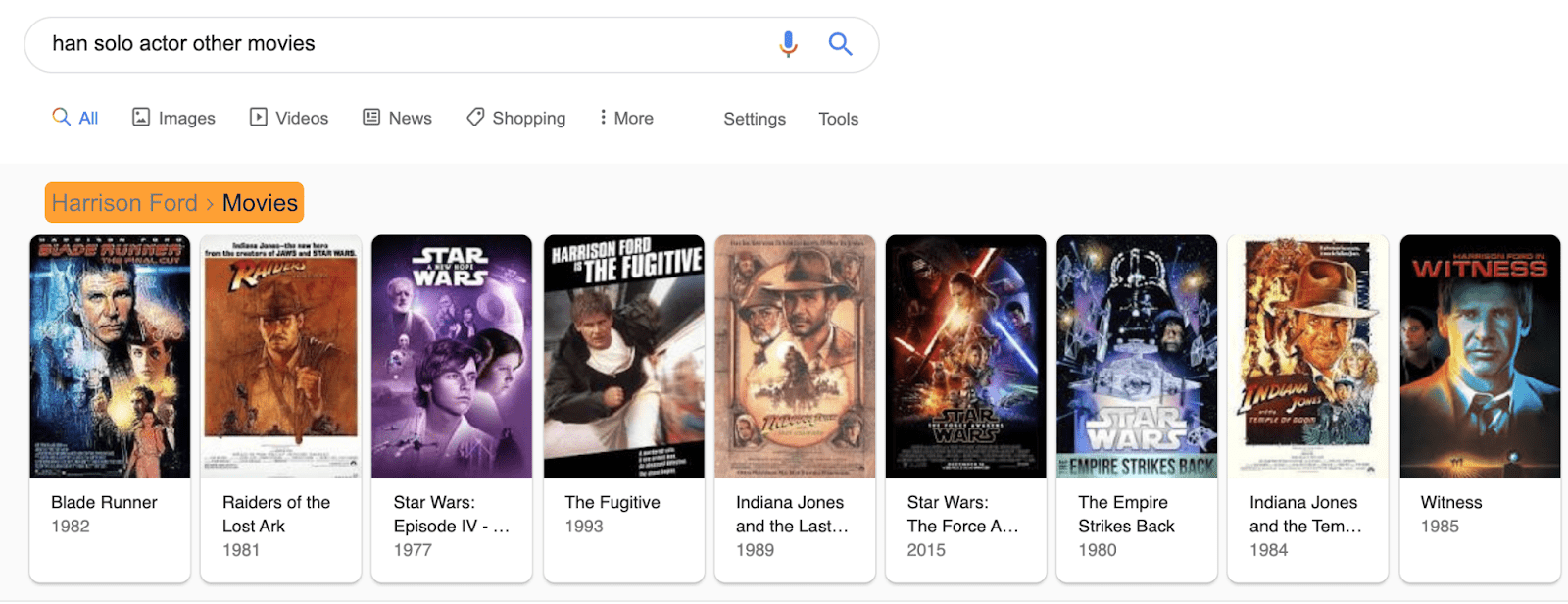
Here, not only are the results relevant, but Google also shows the connection in the Knowledge Graph and provides an entity carousel which satisfies our query.
Google can better accommodate voice searches
With Google Assistant now built into more than one billion devices, and around 70% of requests being expressed in natural language, making sense of voice queries is more important than ever for Google.
How does the Knowledge Graph help with this?
It allows Google to recognize entities and attributes in natural language queries. Just think for a moment about the way you type search queries versus how you actually talk. Yes, there’s a difference.
Take a look at this query, for example:

Because “Han Solo” and “Star Wars” are closely connected entities in the Knowledge Graph, it’s easy for Google to pull the answer you’re looking for.
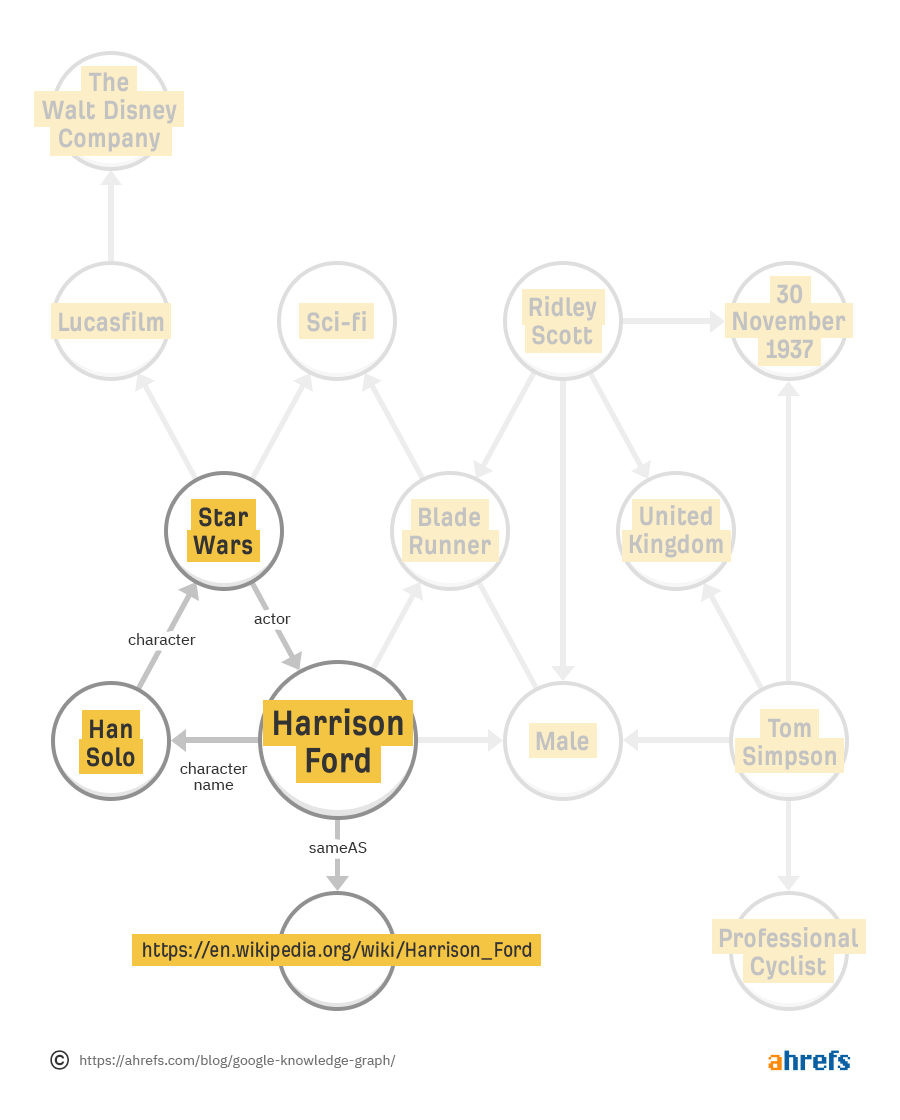
More brand visibility and authority
Google shows Knowledge Graph data in SERP features like Knowledge Panels and Knowledge Cards.
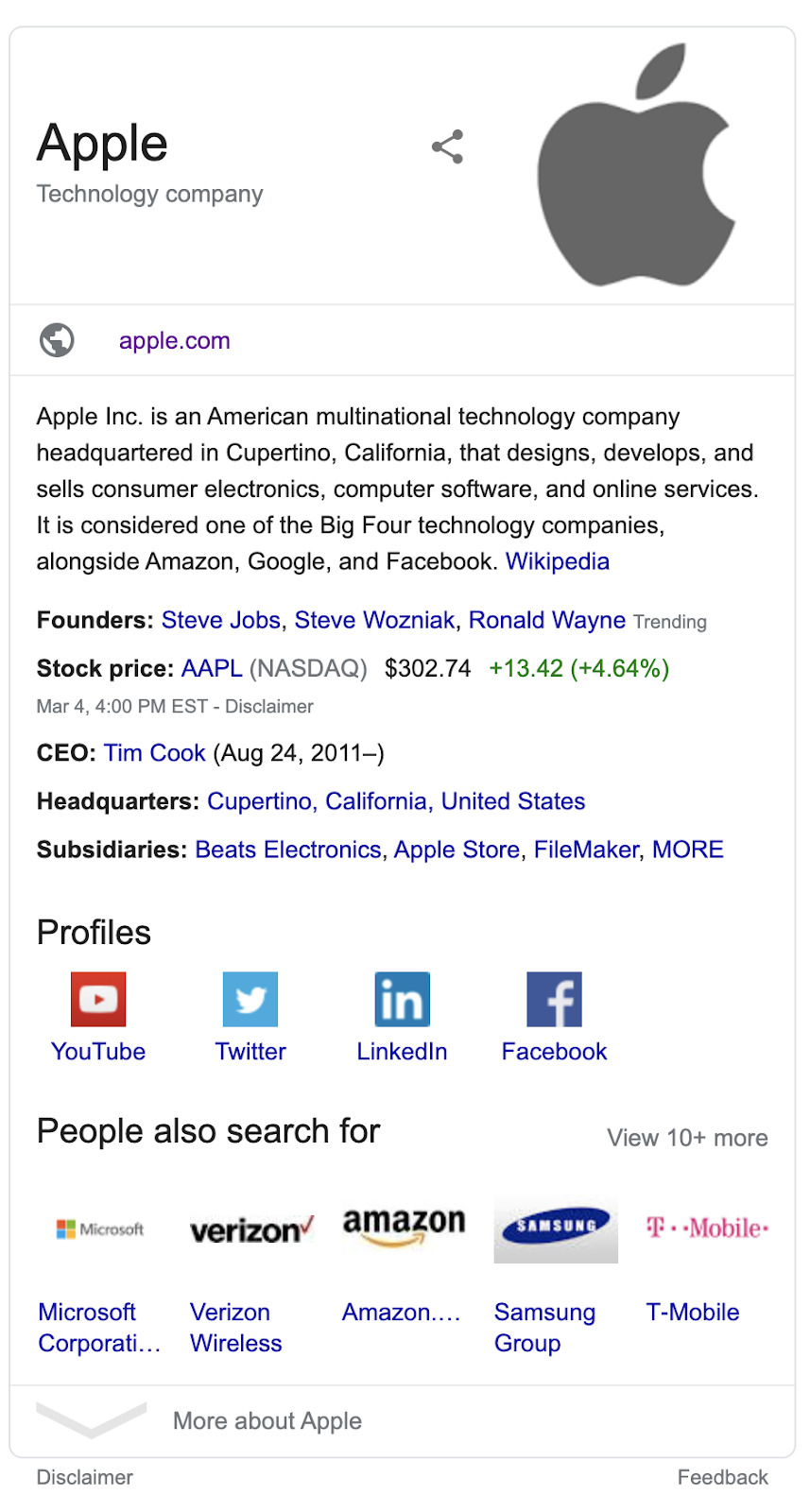
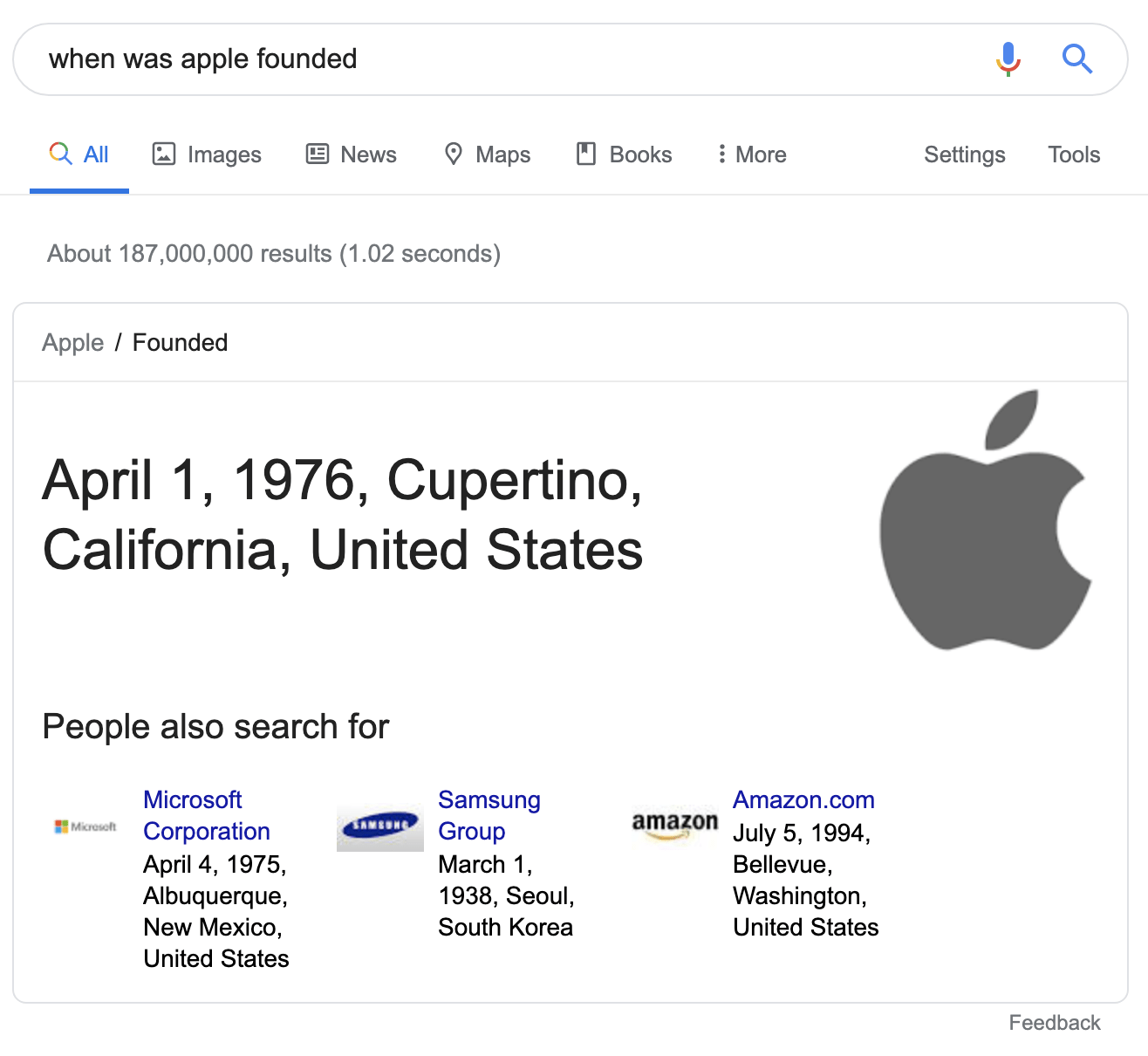
What does that mean for you?
It means that if you can get your brand in the Knowledge Graph, you’ll benefit from more SERP real estate, visibility, and possibly even authority and trust amongst searchers.
You could also find your logo popping up in the SERP for non-branded queries.

Fewer clicks on search results
Based on Rand Fishkin’s latest study, more than 50% of searches result in no clicks.

Part of the reason this happens is down to the Knowledge Graph, which helps Google answer more queries directly in the SERP.
Just look at a query like “what is seo”:
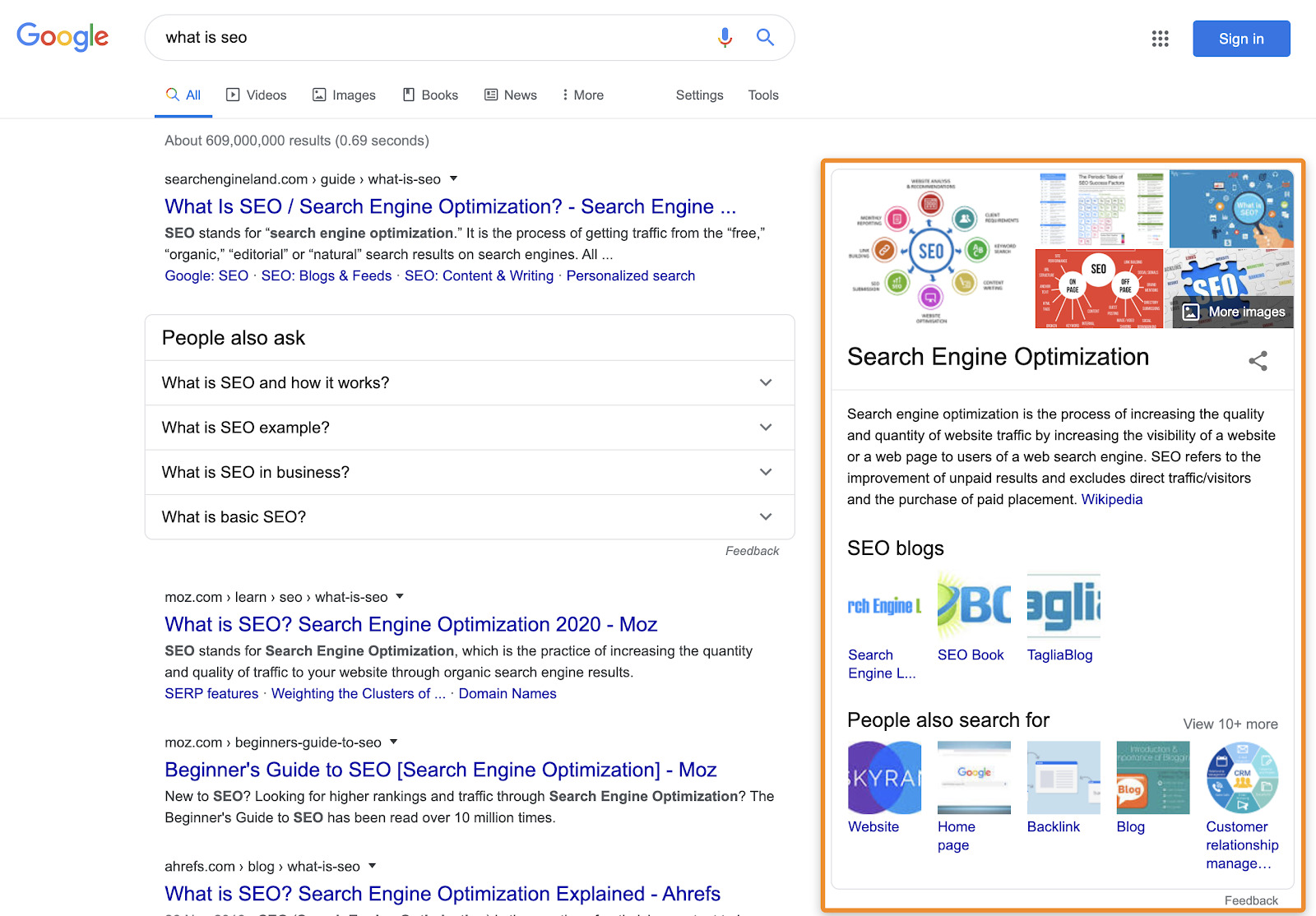
Google shows a Knowledge Panel with data from the Knowledge Graph.
For SEOs, this can be a problem. If people aren’t clicking search results, then you stand to get little or no organic traffic—even if you rank number one.
How do you solve this?
You can avoid targeting keywords with low organic click-through rates.
For example, 58% of searches for “what is seo” result in no clicks…
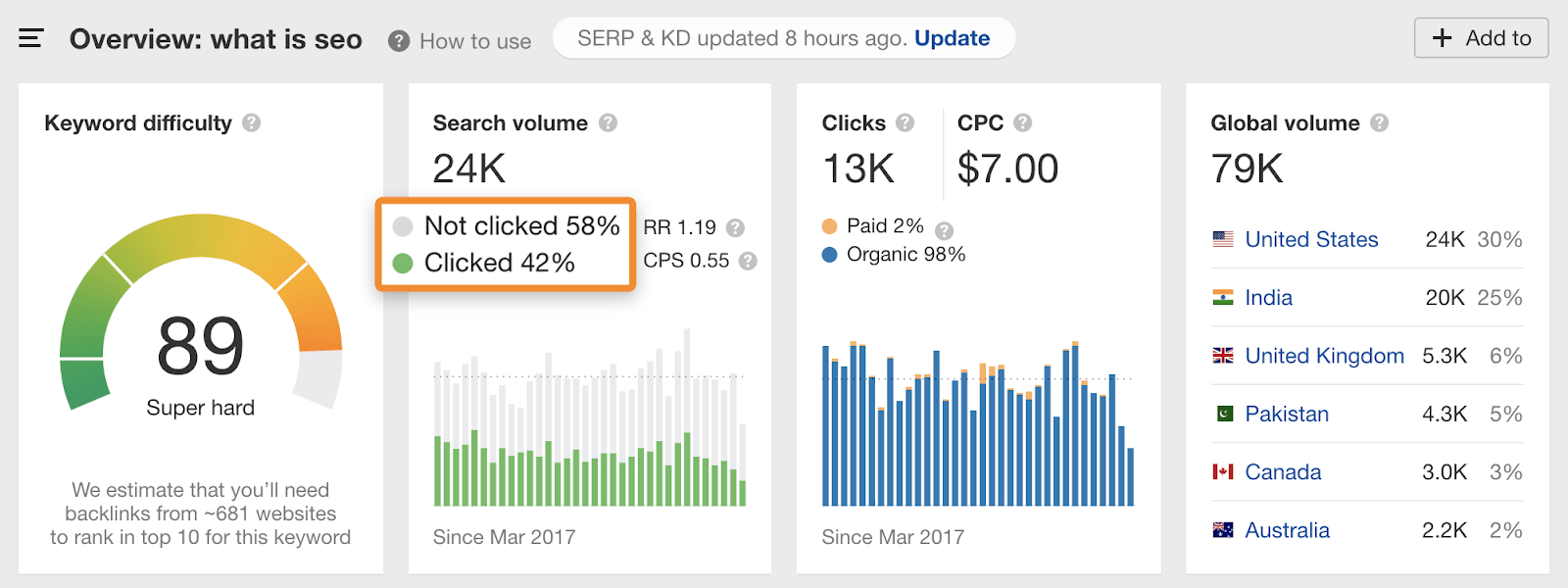
… so while the Knowledge Panel affects CTR, it’s still a good keyword.
But the same isn’t true for a query like “John Legend age,” where only 8% of searches end in clicks.

It should be clear by now that the positives of being in the Knowledge Graph outweigh the negatives, but how do you get in?
While there’s no definitive process, there are a few things you can do to improve your chances.
1. Step up your PR and link building game
Let’s deal with the most challenging aspect first. It’s so much easier to be included as an entity in Google’s Knowledge Graph if your company gets talked about on the internet.
Mentions from newspapers—Forbes, TechCrunch, etc.—tell Google that you may represent a notable entity. However, I understand that this is very difficult for many SMBs so don’t give up just yet. It’s possible to get included even without this.
2. Use schema markup on your site
Schema.org is the officially recommended markup for structured data. That’s a separate topic, so I’ll just point out a few things that may help your business to get into Google’s Knowledge Graph.
- Use organization markup
- Make sure to use at least the name, logo, url and sameAs properties
- Include all your social profiles and possibly Wikidata and Wikipedia pages as your sameAs reference
- Validate the markup
The following is the organization markup that we use:
<script type="application/ld+json">
{
"@context": "http://schema.org",
"@type": "Organization",
"name": "Ahrefs",
"description": "Ahrefs is a software company that develops online SEO tools and free educational materials for marketing professionals.",
"url": "https://ahrefs.com",
"logo": "https://cdn.ahrefs.com/images/logo/logo_180x80.jpg",
"email": "[email protected]",
"address": {
"@type": "PostalAddress",
"addressCountry": "SG",
"postalCode": "048581",
"streetAddress": "16 Raffles Quay"
},
"founder": {
"@type": "Person",
"name": "Dmitry Gerasimenko",
"gender": "Male",
"jobTitle": "CEO",
"image": "https://cdn.ahrefs.com/images/team/dmitry-g.jpg",
"sameAs": [
"https://twitter.com/botsbreeder",
"https://www.linkedin.com/in/dmitrygerasimenko/"
]
},
"foundingDate": "2010-07-15",
"sameAs" : [
"https://www.crunchbase.com/organization/ahrefs",
"https://www.facebook.com/Ahrefs",
"https://www.linkedin.com/company/ahrefs",
"https://twitter.com/ahrefs",
"https://www.youtube.com/channel/UCWquNQV8Y0_defMKnGKrFOQ"
],
"contactPoint" : [
{
"@type" : "ContactPoint",
"contactType" : "customer service",
"email": "[email protected]",
"url": "https://ahrefs.com"
}
]
}
</script>
Learn more: What Is Schema Markup? How to Use It to Help Your SEO
3. Sign up for Google My Business
If you operate a physical business, creating a GMB profile is a must. It helps you with brand visibility and authority in both Google Maps and search because it gives you a branded local listing that resembles the Knowledge Panel.

However, signing up for Google My Business doesn’t guarantee inclusion in the Knowledge Graph. I searched for the most popular restaurants and bars around me in the Knowledge Graph API and very few of them were listed as entities.
Nevertheless, providing Google with structured data in your GMB listing may increase your chance of being included in the Knowledge Graph.
Just make sure to use the same details (name, address, phone number, etc.) as on your website and social media.
4. Create a wikidata.org entry
Wikidata stores structured data for Wikipedia and other Wikimedia websites. I recommend starting with Wikidata entry creation if you don’t yet have any Wikimedia presence.
A big chunk of Google’s Knowledge Graph data comes from Wikidata, and I would argue that having a profile there is even more important than Wikipedia.
But, unlike Wikipedia, creating an item on Wikidata is quite an easy and straightforward process. What’s not easy is complying with all the rules, especially the Notability policy. You can give it a shot using good sources to back up your data but know that it might get deleted unless you already have a linked Wikipedia page.
To get you started with Wikidata, go through their Help portal to get the gist of how the platform works and then watch this video on adding and editing items. You should then be ready to contribute to the biggest open-source structured database.
5. Get a Wikipedia page
Notice how I used the word get instead of create. You can try to create your own Wikipedia page, but you need to make sure to adhere to all policies and guidelines.
In short, mention only objectively valuable information that can be backed up by trustworthy sources. On top of that, you need to comply with the Notability policy already mentioned in the tip above.
This is exactly why you want to be mentioned in mainstream media and other authoritative sources.
I recommend you don’t try to find loopholes in the creation process. Your page will get flagged sooner or later, and anything shady will stick in your log history.
Your best bet is to market yourself so well that someone unaffiliated with your business creates a Wikipedia page for you. Or at least read our thorough guide before you try to create the page yourself.
6. Be consistent
This is a general marketing tip, but I’ll focus on the entities here by asking you a question:
How is Google supposed to show its users accurate and relevant information about your brand and products if your online presence is ambiguous and inconsistent?
This goes even beyond those five tips mentioned earlier. Be consistent with everything when it comes to your online presence.
Google’s Knowledge Panels aren’t perfect. Sometimes they display incorrect information, and this might be true for your branded Knowledge Panel too.
How can you fix this?
Claim your knowledge panel and get verified by clicking the button below it.
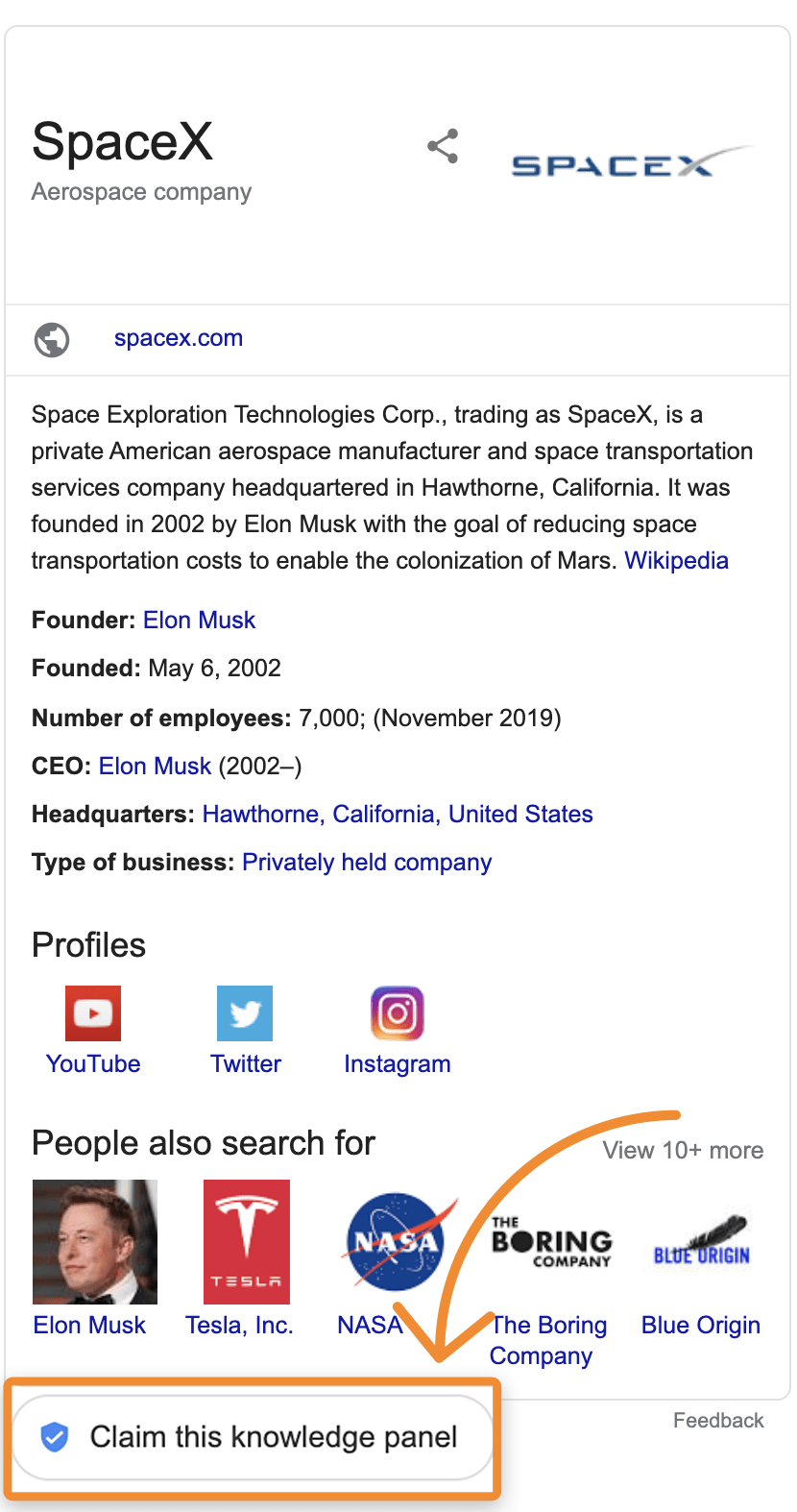
Once verified, you’ll see a “Suggest an edit” button beside the Knowledge Panel whenever you’re logged in to an associated account.
Just make sure to follow Google’s official documentation when suggesting edits or data removals.
Final thoughts
When I started writing this article, Ahrefs didn’t have a Knowledge Panel. But we do now, thanks to the tips I explained above.
What seemed to have the most significant impact was creating a proper Wikidata page, which we also linked in our Organization markup using the sameAs property. Our Wikidata page got indexed the same day we updated the Organization schema, and it took around a week before we saw the Knowledge Panel show up.
Even though we lost both the Wikidata and Wikipedia pages, the Knowledge Panel remained. It lost some attributes but as you should already know, there are other ways to build your entity besides Wiki.
Our experience aside, knowledge graphs and entities have been with us for quite some time already, and they will only become more and more important. Google is already on its way to “entity-first indexing,” so understanding these topics is crucial in today’s SEO.
If you have any questions or remarks about this fascinating topic, feel free to ping me on Twitter.




